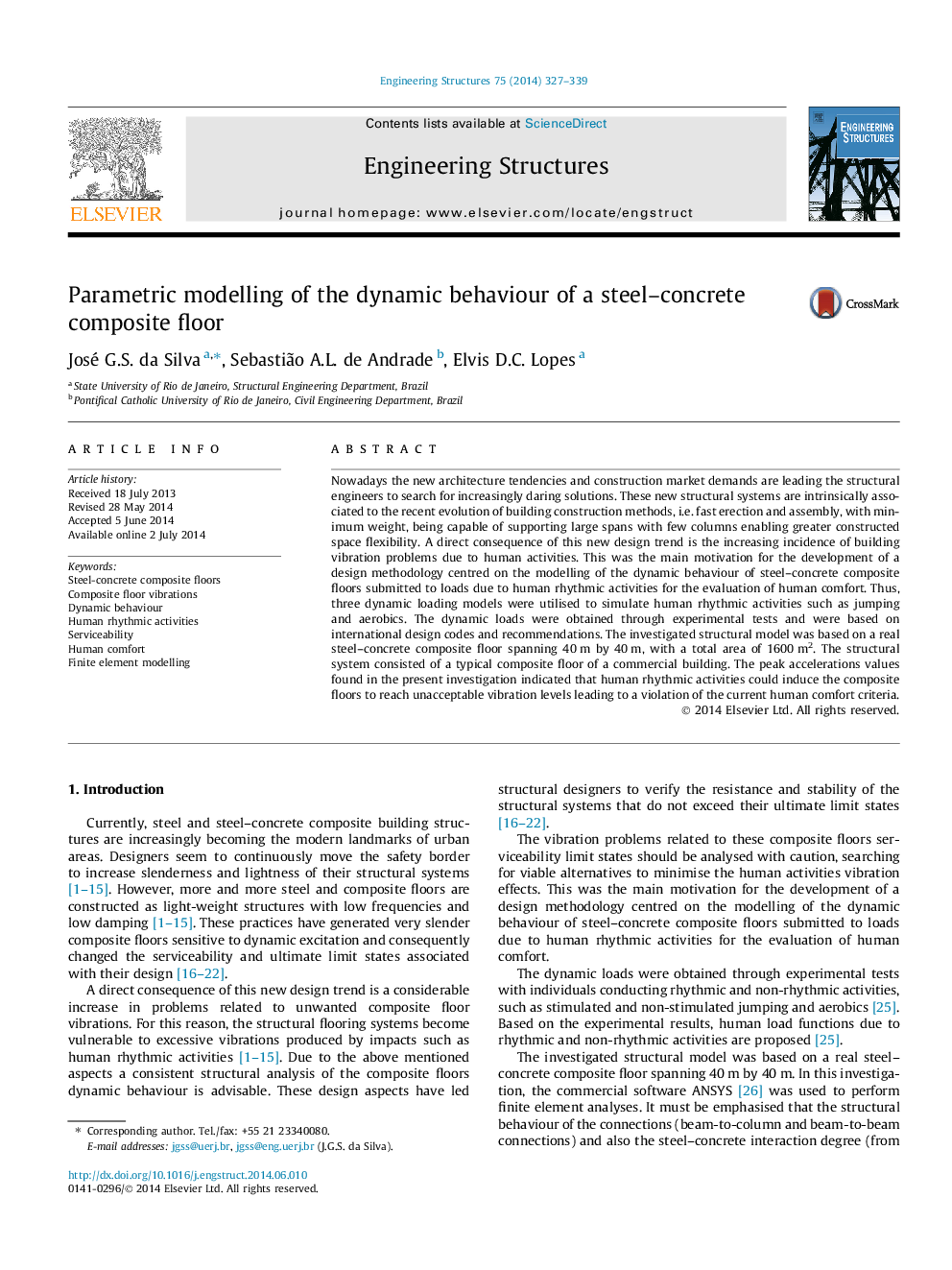| کد مقاله | کد نشریه | سال انتشار | مقاله انگلیسی | نسخه تمام متن |
|---|---|---|---|---|
| 266645 | 504371 | 2014 | 13 صفحه PDF | دانلود رایگان |
• The modelling of the dynamic behaviour of composite floors was investigated.
• The rhythmic crowd loading model was developed based on experimental tests.
• The joints flexibility and steel–concrete interaction degree were considered.
• The peak acceleration values were obtained from an extensive parametric study.
• Human rhythmic activities could induce disturbing vibrations in composite floors.
Nowadays the new architecture tendencies and construction market demands are leading the structural engineers to search for increasingly daring solutions. These new structural systems are intrinsically associated to the recent evolution of building construction methods, i.e. fast erection and assembly, with minimum weight, being capable of supporting large spans with few columns enabling greater constructed space flexibility. A direct consequence of this new design trend is the increasing incidence of building vibration problems due to human activities. This was the main motivation for the development of a design methodology centred on the modelling of the dynamic behaviour of steel–concrete composite floors submitted to loads due to human rhythmic activities for the evaluation of human comfort. Thus, three dynamic loading models were utilised to simulate human rhythmic activities such as jumping and aerobics. The dynamic loads were obtained through experimental tests and were based on international design codes and recommendations. The investigated structural model was based on a real steel–concrete composite floor spanning 40 m by 40 m, with a total area of 1600 m2. The structural system consisted of a typical composite floor of a commercial building. The peak accelerations values found in the present investigation indicated that human rhythmic activities could induce the composite floors to reach unacceptable vibration levels leading to a violation of the current human comfort criteria.
Journal: Engineering Structures - Volume 75, 15 September 2014, Pages 327–339
